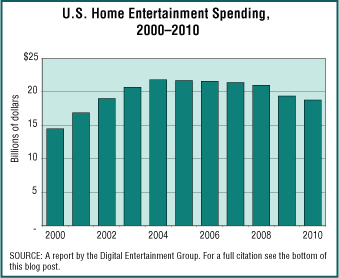The production of video game software is part of the larger software publishing industry, a small part but a growing part. Based on the report used as our source here, cited below, and data from the U.S. Census Bureau on the industry as a whole, in 2010 the gaming software revenue portion of the larger software industry accounted for 6.7% of the total. Today’s market size is the estimated revenue of the largest 220 companies active in the entertainment and games software industry in the United States.
Geographic reference: United States
Year: 2010
Market size: $10 billion
Source: “Entertainment & Games Software Industry Profile,” last updated on November 7, 2011. This is a report being sold by First Research on the website here.
Original source: First Research
Posted on November 18, 2011

